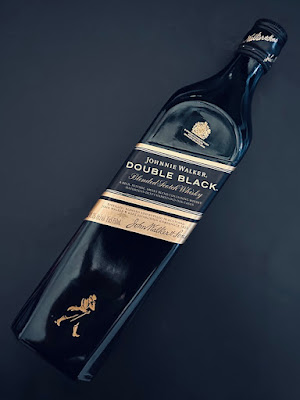Wednesday, July 30, 2025
Things I Really Drink: Compass Box Artist Blend Single Marrying Cask, cask 4 for Binny's (with guest review!)
Friday, July 25, 2025
Things I Really Drink: Hibiki Japanese Harmony
Speaking of Japan, Hibiki Japanese Harmony blended whisky graces my glass today. I had tried this before and found it uninspiring. Its fancier cousin (the Master's Select) left me feeling the same. So why on earth did I buy a full bottle of the stuff at Binny's last year? Well...
- I'm smitten by highballs during these Midwest summers.
- Fond remembrances of age-stated Hibiki.
- Friends encouraged me to give it another try.
- I adore the bottle shape, those lovely 24 facets.
- It was on sale for $79.99. Yeah, a real frickin' bargain. 😐
Brand: Hibiki
Type: Blended whisky
Country: Japan
Distilleries: Yamazaki and Hakushu for malt, Chita for grain
Age: ???
Maturation: "The spirit ages in five types of casks, including rare Japanese oak Mizunara, as well as sherry and bourbon casks."
Alcohol by Volume: 43%
Pricing - $70-$120 in the US, $90-$160 in Europe
Rating - 82 (highballs only, when neat it's 5-10 points lower)
Thursday, July 24, 2025
Things I Really Drink: Johnnie Walker Double Black (2023)
Saturday, July 19, 2025
A Highland Distillery 37 year old 1985 Cadenhead's Club
Though none of these three whiskies were world beaters (oops, SPOILER ALERT), it's still a tremendous pleasure to drink these old Glenmos after consuming American whiskies 1/5 to 1/10 their age for the past few weeks. As a an added plus, none of these three malts (SPOILER ALERT) were tannic oaky beasts.
It's time for me to switch verb tenses and move on to the last of the trio.
(from a bottle split)
NOTES
Ah, the most complex nose of the group. Crème brûlée w/ orange zest, talcum powder, and dried apricots up top; a mix of apples and pears, like a Calvados Domfrontais in the middle; dusty and floral with a pinch of baking spices in the back.
On the palate, picture limoncello but with much less sugar. Apricots, peaches, and a squeeze of lime. Toasty oak spice and a little bit of good bitterness. Never too sweet...
...though the finish is sweeter. Mint candy and lemon candy. Oak spice and some of the palate's bitterness.
WORDS WORDS WODRS
The two Cadenhead bottlings fought it out for my favorite from this group. This one has more angles, but also shows more oak, while the other one offers more drinking pleasures, so I'll give Thursday's 37yo "A Highland Distillery" the slight edge. I'd be happy to own a bottle of either......if 30+ year old whiskies were anywhere near my budget. If your budget is broader, and you want a birthday (or child's birthday) bottle of good drinkin', these secret Glenmorangies might be for you.
Availability - Secondary market, maybePricing - probably around the same price as its kin
Rating - 88
Thursday, July 17, 2025
A Highland Distillery 37 year old 1985 Cadenhead Original Collection
The second member of this week's 1985 Glenmorangie Secret Highland bourbon casks is a 37-year-old bottled by the folks at Cadenhead. Though this bottling may have been reduced to 46%abv, I have a feeling that it wasn't diluted that much, considering its sibling casks were 45.8% and 46.1%abv.
Yesterday's 35yo was fine, though not as fabulous as one would hope for in a Glenmo at its age. How will this '85 compare...
(from a bottle split)
Wednesday, July 16, 2025
Secret Highland Distillery 35 year old 1985 Sansibar
(from a bottle split)
Thursday, July 3, 2025
Five decades of Johnnie Walker Black Label: 1930s, 1970s, 1980s, 2010s, and 2020s
Late King George V became "late" in 1936. And in 2025 my buddy let me take a sample of the bottle's contents home. (Thanks, AP!)









.jpeg)


.jpeg)